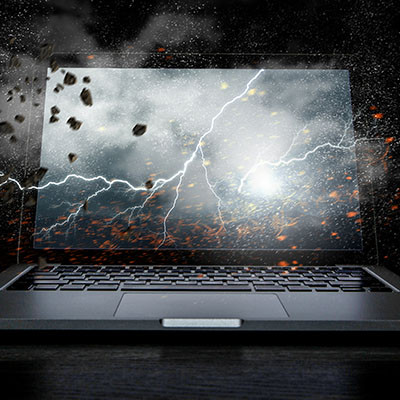Considering how much can go wrong with your business, you must have a plan of action just in case things go awry. A managed IT provider can certainly help with the business technology side of things, but other factors affect how a business recovers from disaster. Let’s consider the many facets of a business continuity plan and how you can improve your own.
BNMC Blog
Your business relies on data to function, and losing this information could be a death sentence for your business without a data backup in place. Today, we want to explore why data backup is such an effective and important part of a business continuity plan, as well as how you can ensure that you are implementing the most important practices in regard to data backup.
One of the biggest letdowns a business can have is when its IT malfunctions, rendering its operations interrupted. Nowadays, there are plenty of actions you can take to ensure that you are in the best position to avoid such occurrences from happening. Let’s go through a few practices that circumvent technology problems and will put your business on the path to productivity.
We have all heard about disaster scenarios in which offices are struck by terrifying threats that put the organization on life support. However, the most devastating disasters don’t necessarily have to destroy your business’ office to really do measurable harm to your organization. All they have to do is disrupt your operations so profoundly that it can be a real challenge to recover.
There are many moving parts of a functional and successful business, all of which depend on access to its data. If you’re not prepared for a worst-case scenario in which your data gets wiped out, you’ll be in dire straits with no opportunities for recovery. If you take proactive action now, you can prevent a data loss incident from sinking your business.
There are a lot of things that can cause a disaster for your business. In fact, you may be surprised to learn that human error is the most prevalent cause for a business disaster. Not a flood, not a fire, not a global pandemic, but someone making a mistake, doing something negligent, or trying to sabotage your business.
It’s a known fact that businesses do not want to imagine what might happen under the absolute worst conditions, but it is something that comes with the territory of being a business owner. If you don’t plan for the worst, it could potentially place your company at risk. How can you prepare yourself for the struggles that come with disaster recovery?
No one likes to imagine the worst-case scenario, but it’s important for businesses to put themselves in the shoes of an organization that has everything to lose. What would happen if you suddenly experienced a data loss disaster, or worse, a complete and total shutdown of operations? If you don’t have a plan in place, you will certainly wish you did. Let’s talk about how to make that happen.
We are used to hearing “redundant” used as a non-complimentary term, so it can be off-putting to hear how you want to make sure that your backups are redundant in case of a disaster. With March 31st being World Backup Day we want to talk about how important redundancy is important, especially in the midst of a considerable disaster event like the one we are doing today.
When we map out a network for a business, a huge factor that goes into the decision-making process is about the data that travels across the network. Your organization’s data, and it’s security and continuity, is extremely important. In fact, we feel it’s one of the most important aspects of your business.
The fear of losing data fuels the data backup market, and with all the new threats that are constantly trying to find you on the Internet, every company has to have a strategy to protect their data. A lot of small businesses struggle to recover if they don’t have proper continuity policies, including data backup, when there is a situation that causes them to lose data.
It’s critical that you protect your business’ important assets, including perhaps the most important of all: its data. One of the best ways to do this is by implementing a solid backup solution. But what’s the best way to approach data backup? After all, every business is going to have different needs. We’re here to tell you all about these different needs, and how your organization can implement a reliable backup solution based on yours.
By now, you’ve probably heard about the importance of business continuity and disaster recovery planning for small businesses. According to FEMA, more businesses have business continuity plans than ever before. With so many SMBs looking to secure their future, there are still a few aspects of business continuity planning that today’s business need to comprehend. After all, there is more to it than just data backup. Disaster recovery is something that needs to be planned, practiced and updated.
No business owner wants to experience data loss in any way, shape or form, which is why it’s so crucial that preventive measures are taken. If you don’t have protections in place, you may find yourself out of business due to a data loss disaster. While that’s certainly the worst-case scenario, the other consequences of data loss are downright troublesome in their own right.
What would happen if you were in the middle of typing a report or performing some task, and the office suddenly lost power? Too many would find themselves staring blankly at an equally blank screen as their infrastructure suddenly ceased operations. However, there is a device that can help save you from the worst effects of sudden power loss.
Technology is always changing and evolving to suit the needs of modern society and business. Organizations that fully understand technology’s impact on business are always trying to make the most of their technology. Here are three ways that your company can better leverage its technological investments to meet your organization’s needs.



















